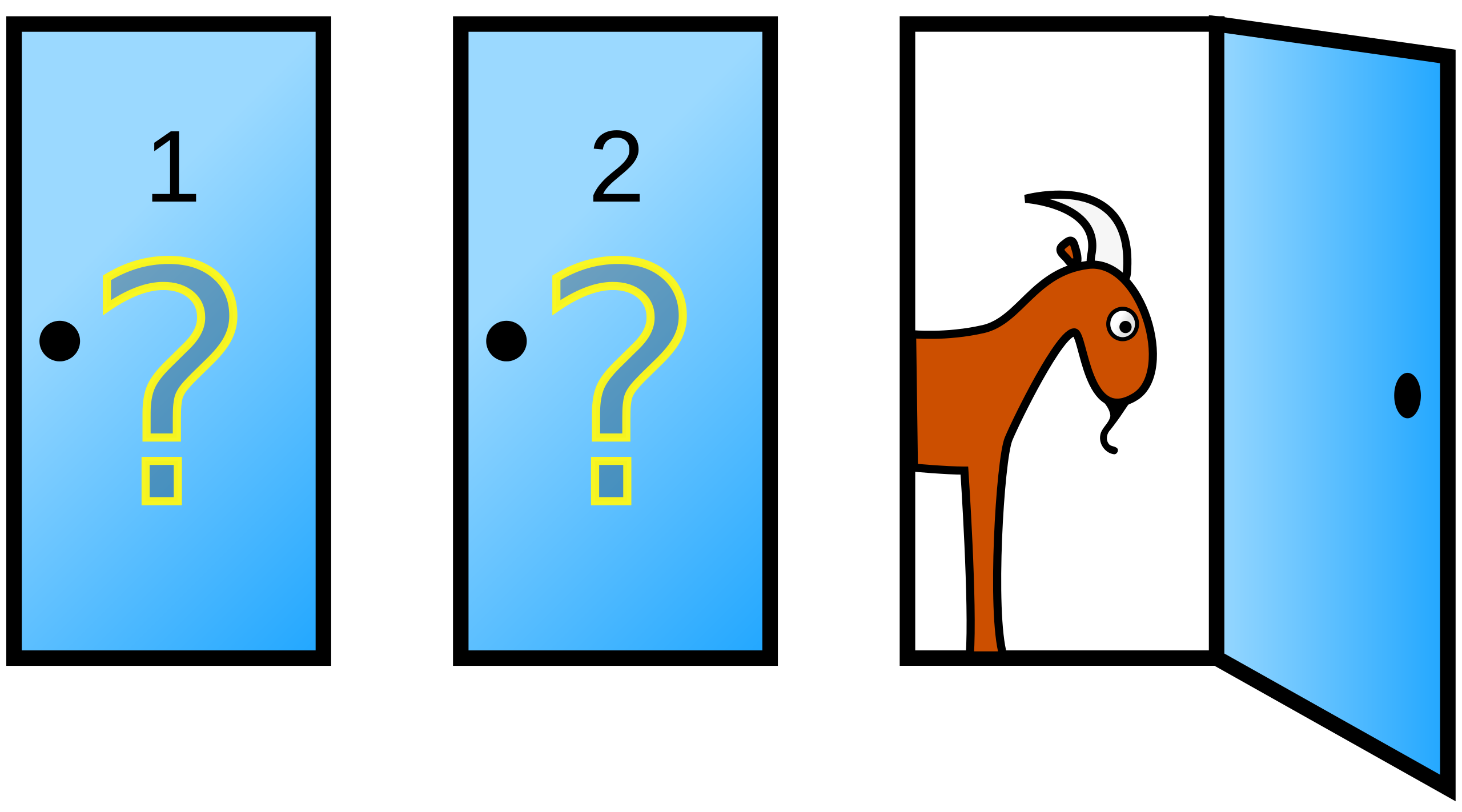The Monty Hall Problem
Imagine you're on a game show facing three closed doors. The host tells you that one door has a car behind it, but the other two have goats.
You're asked to pick a door, in hopes of winning the new car. After you do so, the host opens one of the other doors that has a goat behind it. She then gives you the option to switch your choice to the other remaining closed door.
Here's the brain teaser: Are your odds of winning the car better if you switch your choice to the other door?

This is known as the Monty Hall problem. It was popularized in Marilyn vos Savant's column in Parade magazine in 1990, and the solution is so unintuitive, thousands of people wrote letters of disagreement to her after she published it.
If you're like me, your instinct is that switching shouldn't matter. After the host opens a door, you have a 50/50 chance either way of picking the car, right?
Wrong.
In fact, your odds of winning the car are overwhelmingly better if you switch doors: A 2/3 chance if you switch, and a 1/3 chance if you don't. Though it might not seem like it at first, you have a lot more information than you did previously.
Understanding why this is true is easier if you consider a version of the problem with 100 doors: If you pick one door, and the host opens 98 of the remaining doors, should you switch to the other remaining closed door?
Which door seems more likely to have a car behind it? Your random pick or the door the host intentionally left closed?
Your chance of picking the correct door the first time was 1%. The host isn't opening doors at random — she knows which door the car is behind and is only opening doors with goats behind them.
So if you switch your choice to the other door, you have a 99% chance of winning the car, because so many of the wrong doors have already been opened.
No matter how many doors you imagine the problem with, your chance of picking correctly is always inverted if you switch once the host reveals every door except one.
Jim Frost calls this a statistical illusion. Just like an optical illusion can trick your brain into seeing something impossible, this problem can deceive you into thinking that the original solution is 50/50.
Here's another scenario that illustrates why this illusion is so compelling: Imagine you walk in the room after the host opens the door to reveal a goat. Since you don't know which door the contestant initially picked, your odds of picking the correct door at this point are 50/50.
It's a coin toss for you, because you have less information. But the contestant, who knows which door they initially picked, still has the better odds if they switch, because they know which door the host chose not to reveal.
So why do we care about this? On the surface, it's an inherently interesting problem, because it's a bit of an illusion. But it's also representative of something we experience regularly: When you're presented with multiple options and make a decision, be prepared to change your mind if you receive more information — even if it goes against your intuition.
It might make all the difference.
